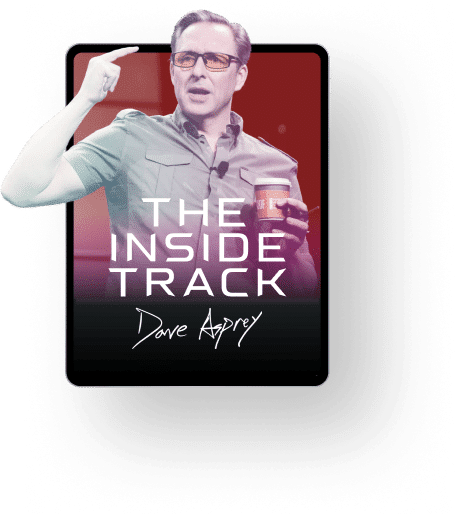Superfoods are one of the most overhyped (and annoying) categories in nutrition. Why? Because every year some “new miracle berry” shows up from the Amazon that supposedly cures everything. Then you find out it’s loaded with plant toxins like oxalates or lectins, and the hype train moves on to the next thing.
Spinach, kale, quinoa, almonds—yeah, those have some nutrients. But they also come with compounds that mess with your gut, your minerals, and your mitochondria.
Coffee, on the other hand, is a superfood. It has mountains of evidence behind it, and I’ve built an entire company around making coffee even better (hi, Danger Coffee).
But there’s another category of true superfoods I’ve been talking about since the beginning of the biohacking movement: algae. Specifically, spirulina and chlorella.
The Most Nutrient-Dense Food on Earth
The United Nations has endorsed algae as a solution to world hunger because it’s the highest-protein food on the planet. NASA has called spirulina one of the most nutrient-dense foods available, with an extraordinary concentration of protein, vitamins, and minerals .
Spirulina and chlorella aren’t just trendy powders. They’re multi-billion-dollar agricultural crops in Asia, used safely for over 60 years. And unlike most “superfoods,” they don’t come with a long list of side effects. They simply work.
Why Algae Works: It’s All About Mitochondria
Your mitochondria are the engines of your cells. They determine how much energy you have, how fast you age, and whether chronic disease takes root. Protecting mitochondria = protecting longevity.
Algae provides unique compounds that directly impact mitochondrial health:
- Superoxide Dismutase (SOD): A powerful antioxidant enzyme that neutralizes superoxide, the most damaging free radical mitochondria produce. Your body makes SOD until about age 30—then production falls off a cliff. Spirulina polysaccharide complex has been shown in vitro to upregulate SOD2, restore mitochondrial membrane potential, and boost ATP production in aging fibroblasts .
- Phycocyanin: A blue pigment in spirulina found almost nowhere else in nature. Lab studies show it supports healthy energy production and may promote apoptosis (natural cell death) in damaged cells . More research is needed in humans, but it’s a promising bioactive.
- Chlorophyll & Glutathione Support: Chlorella is rich in chlorophyll and can bind to heavy metals. A human trial found that chlorella-based supplementation reduced hair levels of mercury, silver, tin, and lead in people with dental amalgams . This supports its detox role, alongside animal and environmental studies confirming its heavy-metal binding capacity .
Clinical Data: Better Mitochondria in Just 7 Days
Katherine Arnston, founder of EnergyBits, recently sponsored a small pilot trial with UC San Diego. The results?
- Mitochondrial respiration increased by ~20%
- ATP production vs. glycolysis improved ~15%
- Reactive oxygen species (ROS) decreased significantly
And it happened in just 7 days of daily spirulina supplementation. By comparison, the same lab found intermittent fasting took three months to deliver similar mitochondrial benefits. While this pilot study is small and unpublished, it aligns with peer-reviewed data showing algae’s role in mitochondrial support .
Spirulina vs. Chlorella
- Spirulina: “Nutritional insurance.” Brain, energy, mitochondria, ATP. Think performance fuel.
- Chlorella: “Health insurance.” Detox, immune support, heavy-metal removal. Think recovery and cleanup.
Professional athletes use this one-two punch all the time: spirulina pre-game for focus and energy, chlorella post-game for recovery and detox.
The Bigger Picture
Nearly 50% of people under age 40 already show signs of mitochondrial dysfunction . By the time you’re over 40, we just call it “aging.”
Spirulina and chlorella are powerful, evidence-based tools to slow that process down. They’re not fads. They’re part of a longevity strategy built on mitochondrial resilience, clean inputs, and the right nutrients that bypass the usual pitfalls of plants.
Biohacking is mitochondria-hacking. When you take care of your ancient cellular engines, you get more energy today—and more years tomorrow.
How to Try It
If you want to experience the difference for yourself, here’s the good news: spirulina and chlorella are affordable. A therapeutic dose costs about a dollar a day.
Go to EnergyBits.com and use code UPGRADE for 20% off. Try it for a week. See if your brain, energy, and performance feel different. You might not notice the change immediately—but stop taking it for a few days, and you’ll notice what you’re missing.
This isn’t about hype. It’s about a food that’s been around for billions of years, with 25,000+ studies behind it, and a track record of improving energy and longevity for decades.
Bottom line: Spirulina and chlorella are the rare “superfoods” that deserve the title. No fads, no plant-toxin baggage—just pure mitochondrial fuel.
? References
- NASA. Spirulina: One of the world’s most nutrient-dense foods. (NASA Technical Reports)
- Machihara K, et al. Restoration of mitochondrial function by Spirulina polysaccharide complex (SPC) in aging fibroblasts. Biogerontology. 2023. PubMed PMID: 37416477
- Romay C, et al. Phycocyanin: A biliprotein with antioxidant, anti-inflammatory, and neuroprotective effects. Curr Protein Pept Sci. 2003.
- Merino JJ, et al. The Long-Term Algae Extract (Chlorella and Fucus sp) on Hair Heavy Metal Levels in Patients with Dental Amalgams and Implants. Biol Trace Elem Res. 2019. PMC6523211
- Kyratzopoulou E, et al. The Efficiency of Chlorella vulgaris in Heavy Metal Removal. Environments. 2025. MDPI
- Nawrocka D, et al. Spirulina platensis improves mitochondrial function impaired by oxidative stress in metabolic syndrome models. Cell Stress Chaperones. 2017.
- Wallace DC. Mitochondrial dysfunction in disease and aging. Nature. 2005; 435: 356-362.
